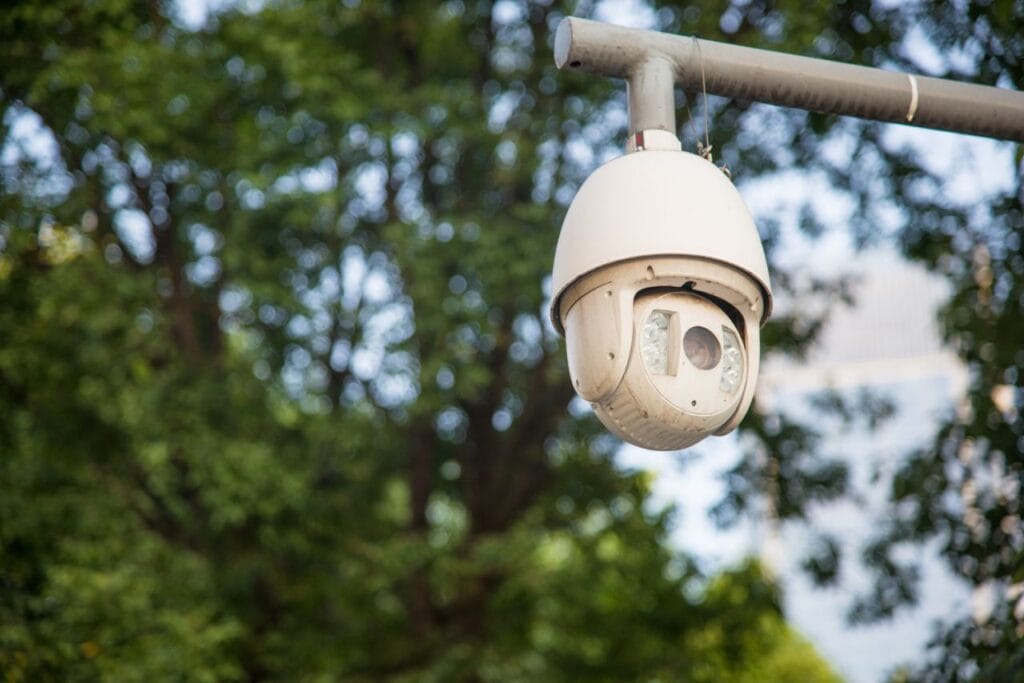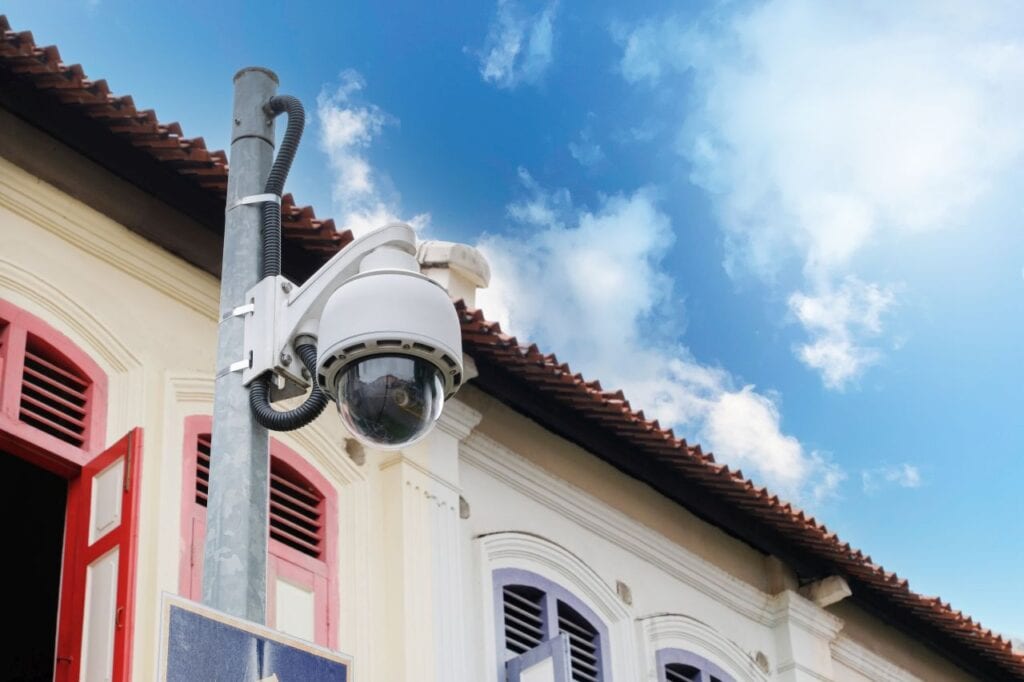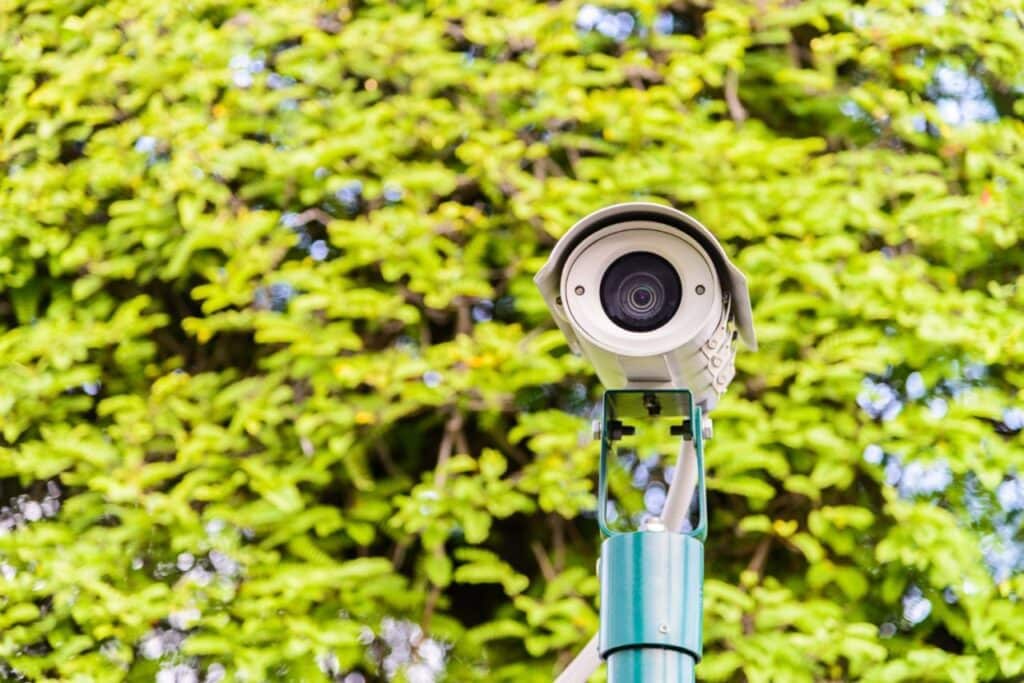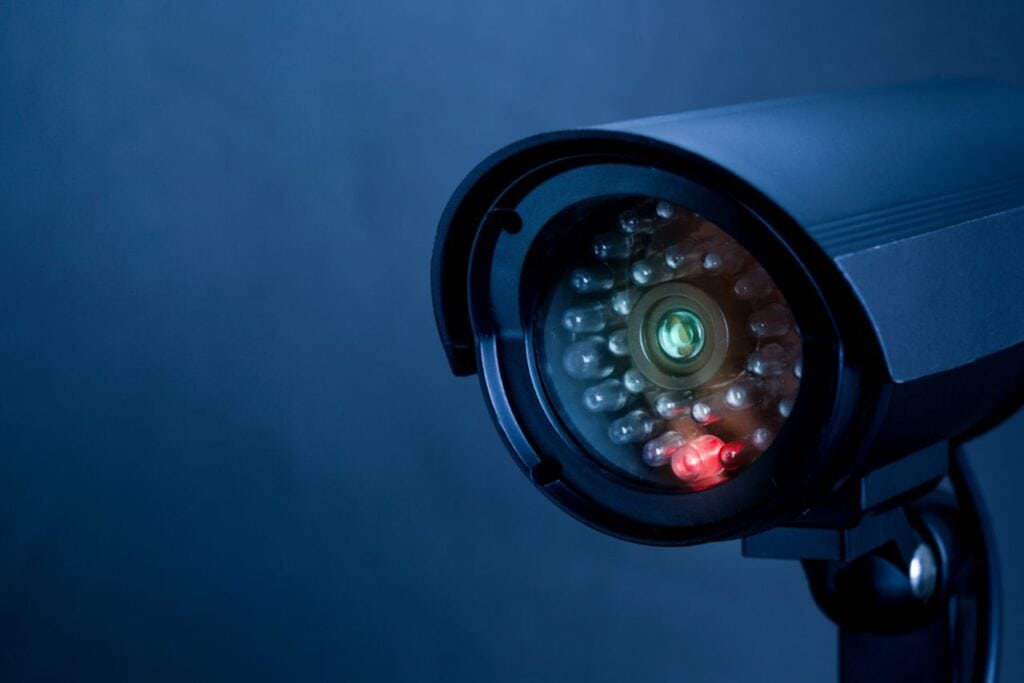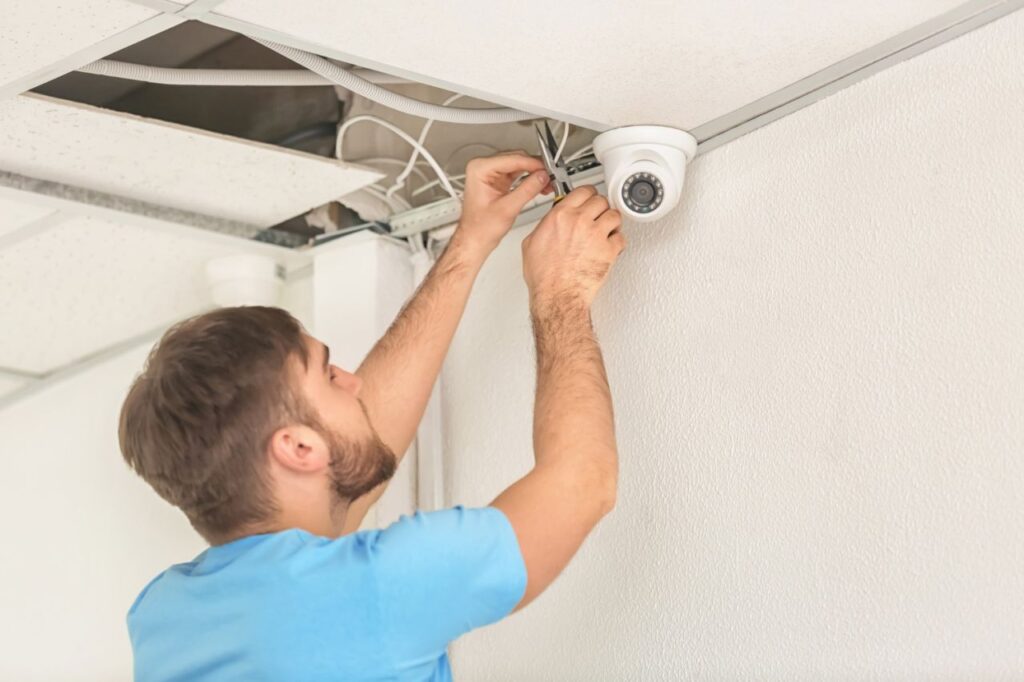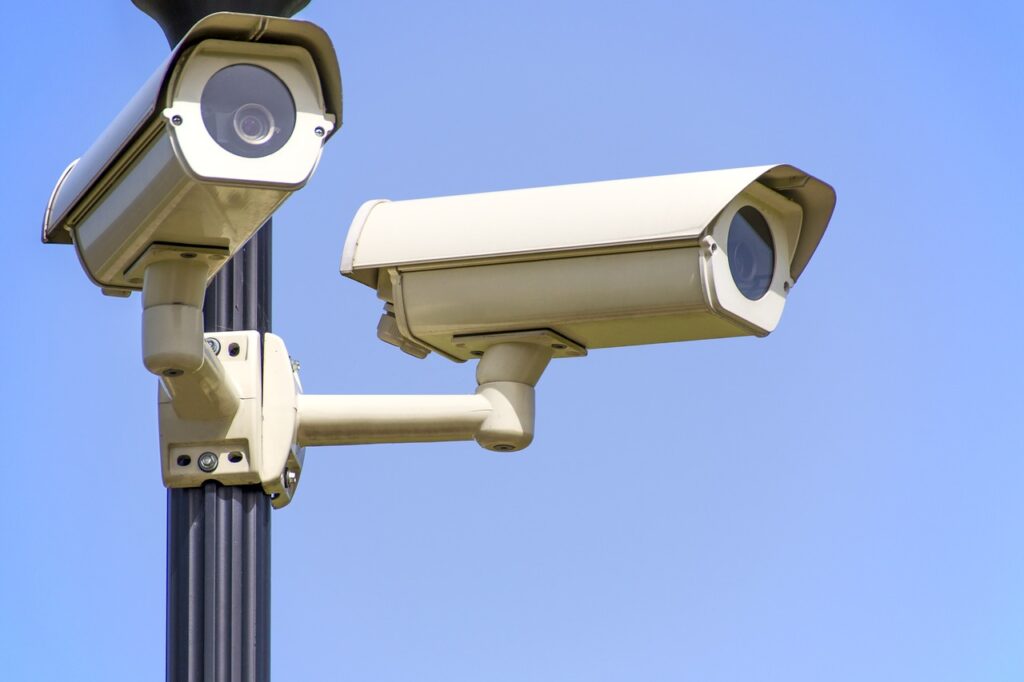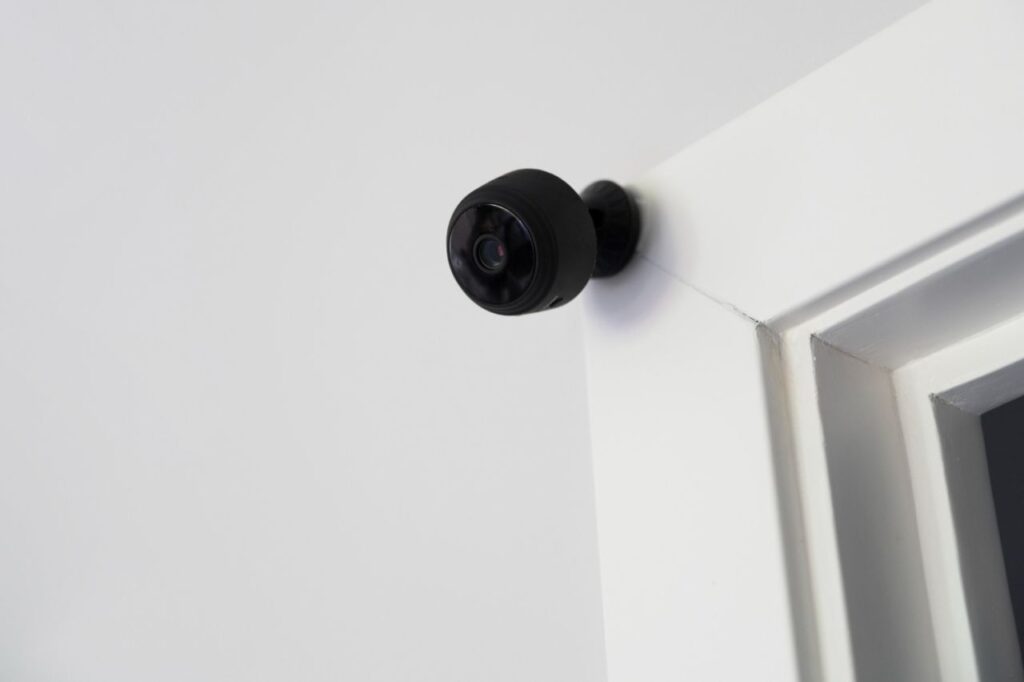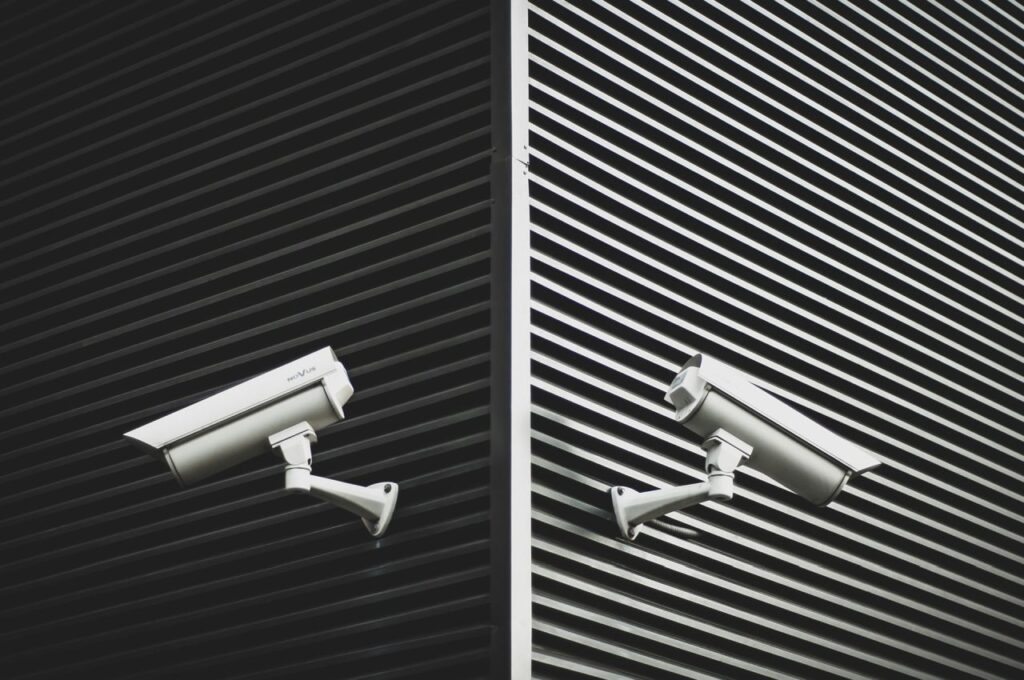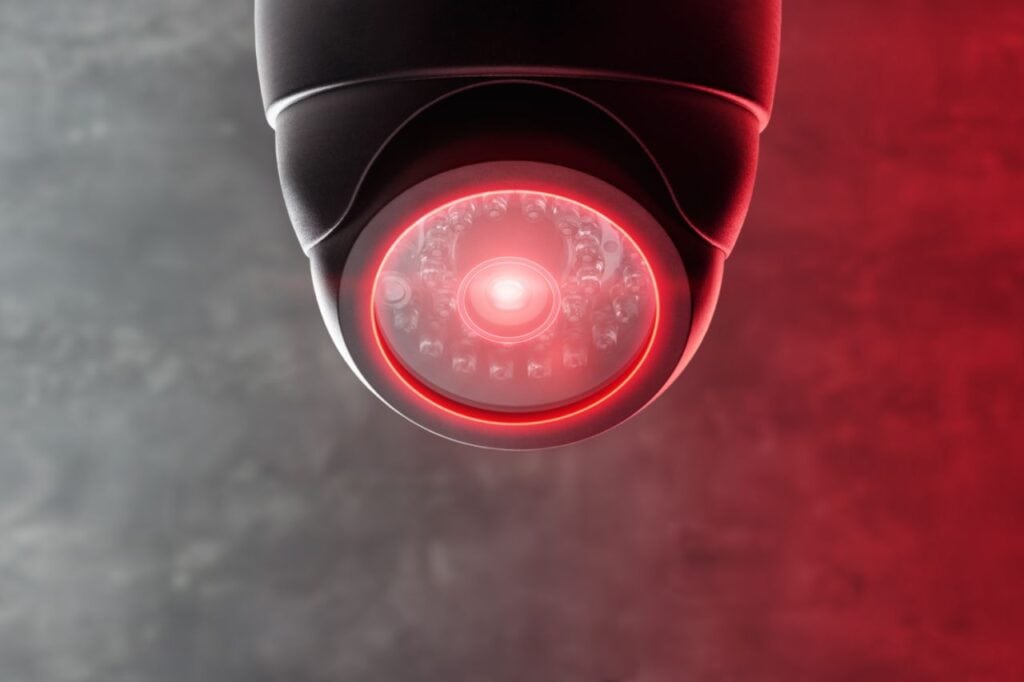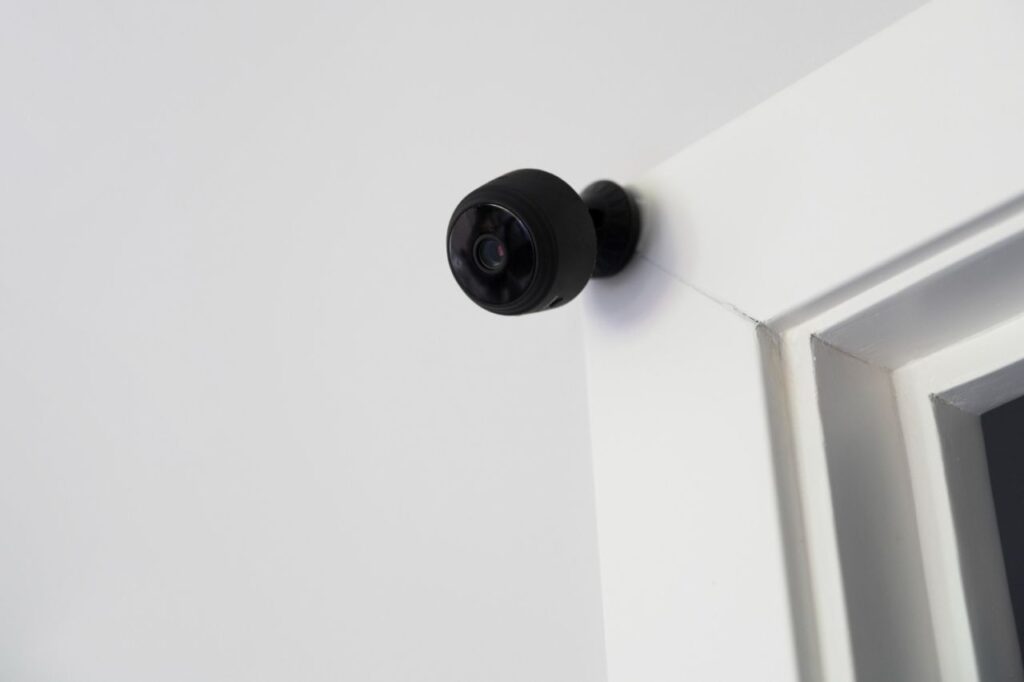If you're thinking about installing a security camera system, one of the first things you'll need to do is figure out what kind of system you want. A thorough awareness of the differences between a digital video recorder (DVR) and a network video recorder (NVR) is crucial while searching for a new security system.
Network video recorders (NVRs) and digital video recorders (DVRs) are both capable of recording video, although they are quite different in practice. Which one do you believe will benefit you the most? To help you choose the recorder that is best suited to your home security needs, we'll go through the pros and cons of the many options available.
DVR Vs. NVR: What Are They For?
Digital video recorders (DVRs) are often used by prominent cable TV providers, so the phrase may already be recognizable to you. However, a DVR designed specifically for security cameras is quite different from a regular DVR. Digital video recorders (DVRs) and network video recorders (NVRs) are two types of video-recording gadgets that vary in how they capture video (NVR).
DVRs receive video feeds from cameras through coaxial cable and process them for storage. When compared to traditional video surveillance systems, NVR systems are almost identical, with the difference that the footage is not processed. On the other hand, NVRs store and organise the footage that is sent to them via IP cameras. To be more precise, a DVR can encode video signals and store them, but an NVR can only save footage that has already been encoded by a camera. Worrying about your home’s security? Then Defend Security Group home security Melbourne is the right choice!
Given the differences in how DVRs and NVRs process video data, the kinds of security cameras that work with each recorder are also varied. Both older analogue cameras and newer HD security cameras broadcast their signals through coax, thus DVRs may use either.
Coaxial cable, which is often linked with a power line, is used to transfer the video signal acquired by a DVR. NVRs are intended for use with IP cameras that receive power and data through Ethernet. IP cameras are also available as wireless security cameras that can communicate with a network video recorder (NVR) or a WiFi router.
What's The Meaning Of NVR And DVR
NVR Explained
The NVR, or Network Video Recorder, is a piece of equipment used to store footage captured by the cameras. First, a video recording is made by the cameras, and then it is delivered to the NVR through Cat5e or Cat6 cables in order to be stored on the NVR's hard disc. Additionally, the cameras' internal hard discs save the recorded footage.
IP cameras, often known as network cameras, are supported by NVR systems. The cameras need Ethernet connections with RJ45 ports in order to be connected to a network or network video recorder.
Network video recorders may be broken down into the following three groups:
Regular NVR
In such a setup, the cameras interact with the NVR through the network after connecting to an external PoE switch. These NVRs have an RJ45 connection for LAN connectivity, allowing for easy installation and setup (via the router or switch).
NVR With Built-In POE NVR (Also Known AS POE NVR).
The IP cameras may be connected to the NVR's many available PoE ports at the back. IP cameras bypass the need for a network switch by connecting directly to the network video recorder (NVR), which typically has anywhere from four to sixty-four ports at your disposal.
WIFI NVR.
This is a unique kind that works with wireless Internet cameras. The camera and the NVR are not hardwired to one another; instead, they are linked and exchange data using wireless technology.
DVR Explained
A digital video recorder (or "DVR") is a device whose main function is to save footage from a network of security cameras. These cameras linked by coaxial wires can only record analogue signals (BNC connectors). Thus, they may be brand new AHD, HD-CVI, HD-TVI, or any other variety via coaxial cable, or they could be older analogue cameras (TV lines).
The analogue cameras will transmit their raw video feeds to the DVR, which will digitise and compress the footage before saving it to disc or passing it on.
The most up-to-date models of DVRs are often marketed as HD DVRs or HVRs by merchants. "HD DVR" refers to a digital video recorder that can capture high-definition footage. These recorders are backwards-compatible with analogue HD cameras that utilise coaxial wires. On the other hand, they may generate high-definition or even ultra-high-definition pictures. As a result, from a strictly functional aspect, it is still a DVR; nevertheless, vendors attempt to upsell the clients by giving them fancy titles.
The hybrid video recorder (HVR) combines the advantages of a DVR with an NVR, allowing it to work with both IP and analogue HD cameras. As a result, a single recorder may be used to capture video from a number of cameras.
The HVR often degrades camera resolution because it gives higher functional priority to analogue cameras over Internet Protocol (IP) cameras. This form of DVR is therefore ideal when just a few of high-priced IP cameras are needed, with the remainder of the cameras being standard analogue HD models (cheaper).
Frequently Asked Questions About NVR
If your NVR is connected to a monitor and to power, it doesn't need to be connected to the Internet in order to access the recorder's camera feeds. In fact, the recorder doesn't even need to be connected to a LAN outside of itself.
Most security camera footage is stored for 30 to 90 days. This is true for hotels, retail stores, supermarkets, and even construction companies. Banks keep security camera footage for up to six months to comply with industry regulatory requirements.
Because each IP camera has its own user interface and camera options built into the camera itself, not all IP cameras are completely compatible with all NVRs.
As far as one camera being connected to two NVR's, this is possible but you need to be careful in how you do it and can run into problems depending on what Cameras/NVR's you are using.
Recording Quality: When NVR systems are functioning properly they provide for much higher quality footage than a DVR system. Because of the nature of the NVR, you can enjoy the high-resolution videos and crystal clear images that older cameras and analog systems simply cannot capture.
DVR And NVR Differences
Network video recorders (NVR) and digital video recorders (DVR) are two examples of video recording systems that may be utilised with security cameras.
The two systems seem to serve the same basic purpose at first glance: they both capture the live video feed from the cameras, store it, and make it accessible for later viewing.
DVRs and NVRs are essentially indistinguishable from one another, with the main difference being the means of exchanging and receiving video data.
Analog cameras provide the data for the camera stream, which is recorded on a DVR system. Due to the inability of analogue cameras to process video locally, the raw video feed is sent through coaxial wires to the recorder.
The footage is digitised so that it may be recorded or accessed in real-time. NVR systems may record video from either IP (Internet Protocol) or digital cameras.
To record and analyse video, IP cameras use just the resources available inside the camera itself. The processed data stream is then sent to the recorder via Ethernet connection.
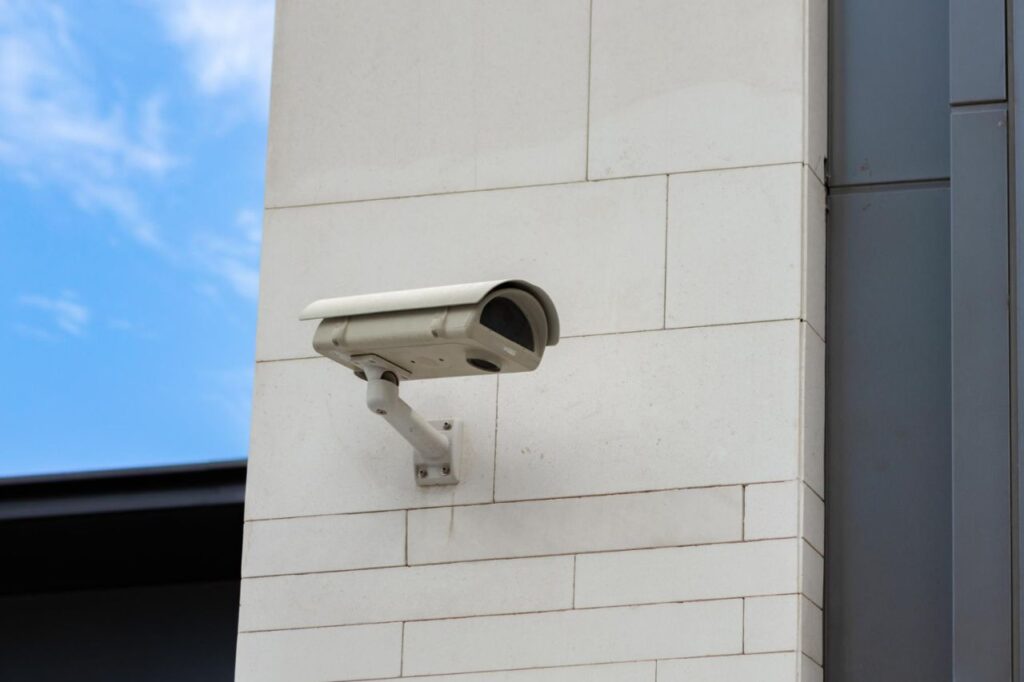
Cameras
PoE (Power over Ethernet) and WiFi (Wi-Fi) cameras are two examples of IP cameras that can convert raw video data to digital signals and send them to a network video recorder (NVR) for storage. Those two kinds of cameras are IP cameras, and NVR may record from them.
IP cameras that provide both data (video or audio) and power (through the same Ethernet line) are known as PoE IP cameras. You'll save time as you'll just need to run a single wire to connect all of the cameras. See our list of available home & business CCTV Melbourne for your security solutions.
You may use any analogue camera with a DVR, whether it's an older model (that uses TV lines) or a newer one (that uses HD technologies like HD-CVI, HD-TVI, AHD, etc.). The raw analogue signal generated by these cameras is sent to the DVR, where it is processed and turned into a digital signal. The camera has internal hard drives where the processed video is stored.
Recorder
The digital data sent to the NVR from the IP cameras it is linked to eliminates the need for further encoding on the NVR's end. This means that the NVR only acts as a data recorder or data analyser as directed by the software.
The DVR is a one-of-a-kind device. If it's going to save the camera's analogue signal on the internal hard drive, it has to first convert it to digital form after receiving it. As a result, the DVR has to put in a lot more "leg work" than the NVR does.
Ports And Wiring
Connecting IP cameras to the NVR is done using its RJ45 connections. Coaxial ports are the ones on the DVR that allow you to connect your cables (sometimes BNC ports). You can tell the difference between a DVR and an NVR by looking at the ports on the back of each device.
The illustration clearly shows that BNC ports may be distinguished from others by their unique design. For instance, the total number of accessible ports may be 4, 8, or 16 depending on the channel number. A network video recorder (NVR) has zero BNC ports.
Both wired (using Cat5, Cat6) and wireless (using Wi-Fi) connections are viable options for connecting the NVR to the IP cameras. The network connection may provide the camera with both data (video and audio) and power. To put it another way, you'll need one run for every camera.
For analogue signals to be sent from digital video recorders (DVRs), coaxial cables are employed despite their inflexibility and difficulty of installation. It is also preferable to use a dedicated power cord to provide energy to the camera.
If you want to power and transmit an analogue signal from a camera, you'll need two cords. The use of ethernet to analogue converters, however, is a relatively new approach.
Image Quality
IP cameras provide better picture quality than even 4K and are quickly replacing traditional CCTV systems. They start at 1080p and go all the way up to 4MP, 8MP, 4K, and beyond.
Low-resolution cameras are used in most DVR analogue systems, while some manufacturers do provide 4K camera systems. In addition, interference, rolling lines, and other defects may appear on the screen if your DVR system uses the more common coaxial connection.
When compared to DVRs and analogue cameras, the price of NVRs and IP cameras is higher. The price of an analogue camera is much lower. Quite simply, they are able to create more high-quality photographs, thus their costs reflect that. There are, however, affordable NVR systems on the market today.
AUDIO
The audio may be obtained from the camera in addition to the video, which is a key differentiation offered by IP cameras. You just need the camera itself, and not a separate wire for the microphone, since all the necessary signals (video, audio, and power) will be sent over the same connection.
Further, some high-end IP cameras offer built-in two-way audio for further interactivity. The gadget has a built-in mic and speaker, so you can listen in and respond in kind through the camera. Also, there is no need to run extra cables.
IP cameras that are NVR-compatible have these capabilities.
It might be difficult to get sound to record on a DVR. You may do this by connecting an external microphone to the DVR's RCA input, but first you'll need to link data and power connections to the area where the camera will be placed. Once you've finished everything on this list, you'll be ready to travel.
It's not easy, the sound won't be great, and you'll have to run a lot of cables, which means more places for things to go wrong. Furthermore, DVRs generally have between one and four audio ports, but NVRs have none of these limitations. Last but not least, there is no limit to the number of IP audio cameras that may be installed, albeit the NVR's channel count must be able to handle that many cameras.
Distance
This allows for greater leeway in setting up IP camera systems with NVRs in terms of installation distance. Using Power over Ethernet (PoE) switches, you may expand the distance to meet your needs. Best practices recommend relocating the cameras 100 to 150 feet away from the switches before installing a new switch (or booster) on the line. PtMP (point to multipoint) devices might also be used to link two NVRs separated by hundreds of kilometres.
The other alternative is to utilise a WiFi camera, which can be set up wherever there is reliable internet connection.
The maximum transmission distance for both standard and HD analogue cameras varies between 300 and 1500 feet, depending on the camera model and cable quality. However, issues such as low-quality photos or video artefacts are more likely to occur with longer runs.
Cloud-Based Functions
NVRs are optimised for cloud-based technologies and the storage of video footage. Furthermore, NVRs are optimised for use with cloud computing systems. Doing so reduces the strain on the local storage while safeguarding the recordings from loss in the case of a damaged hard disc.
Some newer versions of DVRs include cloud storage capabilities, although this is not the case for the great majority of DVRs. Despite the fact that they may save footage in the cloud, cloud DVRs lack the functionality and hardware of network video recorders (NVRs). They were not made for that purpose.
Average Cost Of DVR Vs. NVR
A network video recorder (NVR) system will typically cost more than a digital video recorder (DVR) system; however, this can differ depending on the number of cameras to be placed and whether or not additional cabling will be required.
Analogue CCTV cameras, which have been around longer, are used in DVR systems and may be purchased for lower costs. Digital IP cameras, used in NVR systems, are more expensive but provide a wider variety of functionality.
The Pros And Cons Of DVR And NVR Systems
Should we get a DVR or an NVR? To help you make an informed decision, let's weigh the pros and cons of each of these paths.
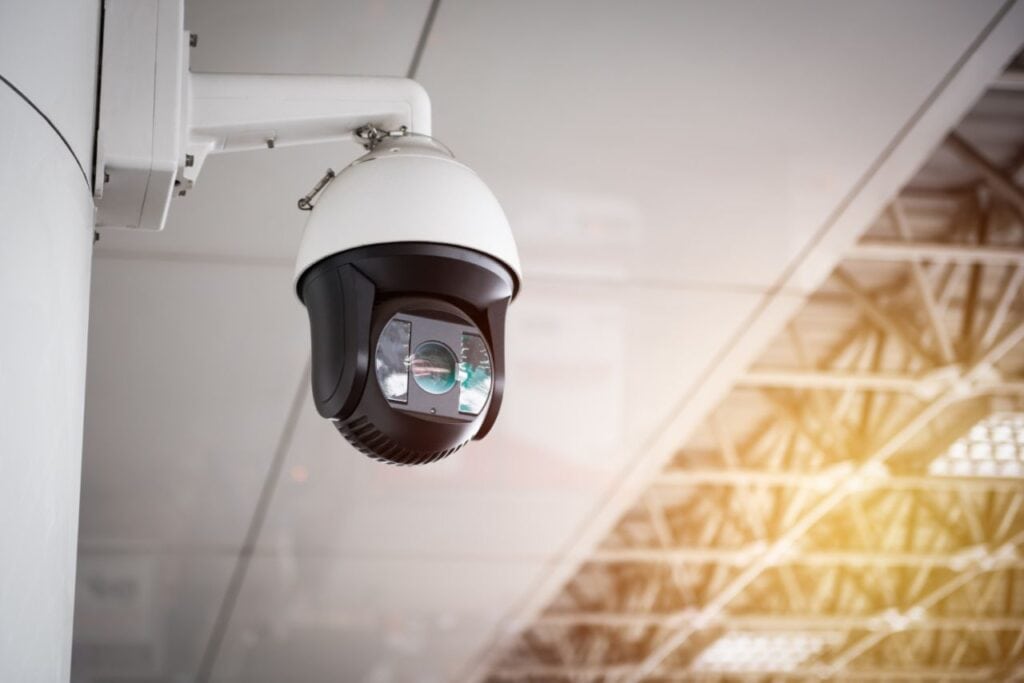
To cut a long tale short, an NVR camera system should be your first choice if you are installing a brand new security setup. IP systems may be upgraded in the future, and the video quality is far higher than that of analogue systems.
Also, it's cutting-edge gear, so it has plenty of neat extras like a faster frame rate and sharper images than anything else out there (UHD). Cons: It's usually more costly, despite falling costs, and it could be difficult to set up all the security settings.
NVR IP Camera System: Pros And Cons
PROS:
- Cameras ranging in resolution from 1080p all the way up to Ultra High Definition (UHD) benefit from the industry's best technology.
- Power over Ethernet, or PoE for short, is supported, and wireless connectivity is also possible.
- AI and various forms of intelligent functionality such as automatic monitoring, population counting, and other forms of sophisticated analytics
- Two-way audio and video communication
- Assembly is simple and it comes in modular pieces.
CONS:
- More money out of pocket is required.
- Configuring all of the smart or AI features might be challenging.
DVR Security Camera System: Pros And Cons
Pros:
- Cheaper
- The installation of the Basic configuration needs zero networking expertise on the part of the user.
- The most effective method of updating an older analogue CCTV system
Cons:
- Image quality is quite poor to average.
- A data wire and power cable are needed for each camera.
- Cannot capture sound in its original form; external microphones are needed.
- There will most likely be picture interference.
DVR Vs NVR: Which One To Choose?
DVR and NVR are equally competitive and cannot be definitively compared. The two most crucial factors to take into account are your available budget and the technical specifications of your planned system. In the same way that the price of a car rises in direct proportion to its horsepower, the cost of a complex system will do the same. If you're looking for high-quality, affordable home & business video alarm systems, you’re in the right place! Check Defend Security Group.
Today's internet-connected world, however, has made NVRs the de facto norm and future of security systems. Using network video recorders (NVRs) and Internet protocol (IP) cameras is a good idea if you are setting up a system from scratch. It is possible to upgrade to HD cameras while using the same wiring and record everything to a DVR, if you currently have an older setup.
There are more advantages to the NVR system than there are to the DVR system. It's possible that external factors will affect your judgement, however.
Conclusion
There are two types of video-recording gadgets that vary in how they capture video: digital video recorders (DVR) and network video recorder (NVR). DVRs can encode video signals and store them, but an NVR can only save footage that has been encoded by a camera. IP cameras, often known as network cameras, are supported by NVR systems. IP cameras bypass the need for a network switch by connecting directly to the NVR. The digital video recorder (or "DVR") is used to save footage from a network of security cameras.
The hybrid video recorder (HVR) combines the advantages of a DVR with an NVR, allowing it to work with both IP and HD cameras. The HVR often degrades camera resolution because it gives higher functional priority to analogue cameras over Internet Protocol (IP) cameras. IP (Power over Ethernet) and WiFi (Wi-Fi) cameras are two examples of IP cameras that can convert raw video data to digital signals and send them to a network video recorder (NVR) NVR may record from an IP camera, and PoE IP cameras.
Content Summary
- If you're thinking about installing a security camera system, one of the first things you'll need to do is figure out what kind of system you want.
- A thorough awareness of the differences between a digital video recorder (DVR) and a network video recorder (NVR) is crucial while searching for a new security system.
- Network video recorders (NVRs) and digital video recorders (DVRs) are both capable of recording video, although they are quite different in practice.
- Which one do you believe will benefit you the most?
- To help you choose the recorder that is best suited to your home security needs, we'll go through the pros and cons of the many options available.
- DVR Vs.
- However, a DVR designed specifically for security cameras is quite different from a regular DVR.
- Digital video recorders (DVRs) and network video recorders (NVRs) are two types of video-recording gadgets that vary in how they capture video (NVR).
- Worrying about your home's security?
- Given the differences in how DVRs and NVRs process video data, the kinds of security cameras that work with each recorder are also varied.
- First, a video recording is made by the cameras, and then it is delivered to the NVR through Cat5e or Cat6 cables in order to be stored on the NVR's hard disc.
- Additionally, the cameras' internal hard discs save the recorded footage.
- IP cameras, often known as network cameras, are supported by NVR systems.
- The cameras need Ethernet connections with RJ45 ports in order to be connected to a network or network video recorder.
- The IP cameras may be connected to the NVR's many available PoE ports at the back.
- IP cameras bypass the need for a network switch by connecting directly to the network video recorder (NVR), which typically has anywhere from four to sixty-four ports at your disposal.
- This is a unique kind that works with wireless Internet cameras.
- DVR Explained A digital video recorder (or "DVR") is a device whose main function is to save footage from a network of security cameras.
- HD DVR" refers to a digital video recorder that can capture high-definition footage.
- The hybrid video recorder (HVR) combines the advantages of a DVR with an NVR, allowing it to work with both IP and analogue HD cameras.
- As a result, a single recorder may be used to capture video from a number of cameras.
- DVR And NVR Differences Network video recorders (NVR) and digital video recorders (DVR) are two examples of video recording systems that may be utilised with security cameras.
- DVRs and NVRs are essentially indistinguishable from one another, with the main difference being the means of exchanging and receiving video data.
- Analog cameras provide the data for the camera stream, which is recorded on a DVR system.
- NVR systems may record video from either IP (Internet Protocol) or digital cameras.
- Cameras PoE (Power over Ethernet) and WiFi (Wi-Fi) cameras are two examples of IP cameras that can convert raw video data to digital signals and send them to a network video recorder (NVR) for storage.
- Those two kinds of cameras are IP cameras, and NVR may record from them.
- IP cameras that provide both data (video or audio) and power (through the same Ethernet line) are known as PoE IP cameras.
- See our list of available home & business CCTV Melbourne for your security solutions.
- Recorder The digital data sent to the NVR from the IP cameras it is linked to eliminates the need for further encoding on the NVR's end.
- The DVR is a one-of-a-kind device.
- Ports And Wiring Connecting IP cameras to the NVR is done using its RJ45 connections.
- Coaxial ports are the ones on the DVR that allow you to connect your cables (sometimes BNC ports).
- You can tell the difference between a DVR and an NVR by looking at the ports on the back of each device.


